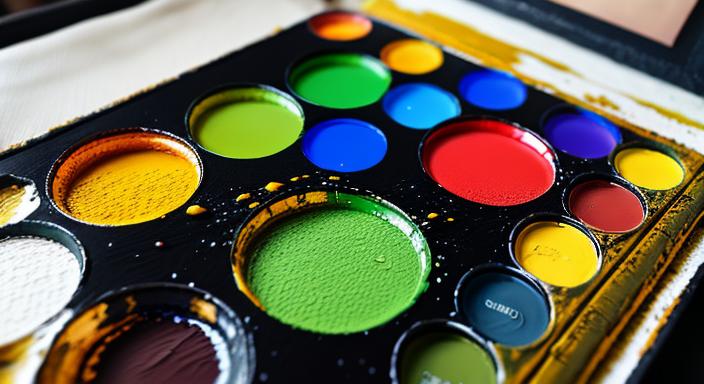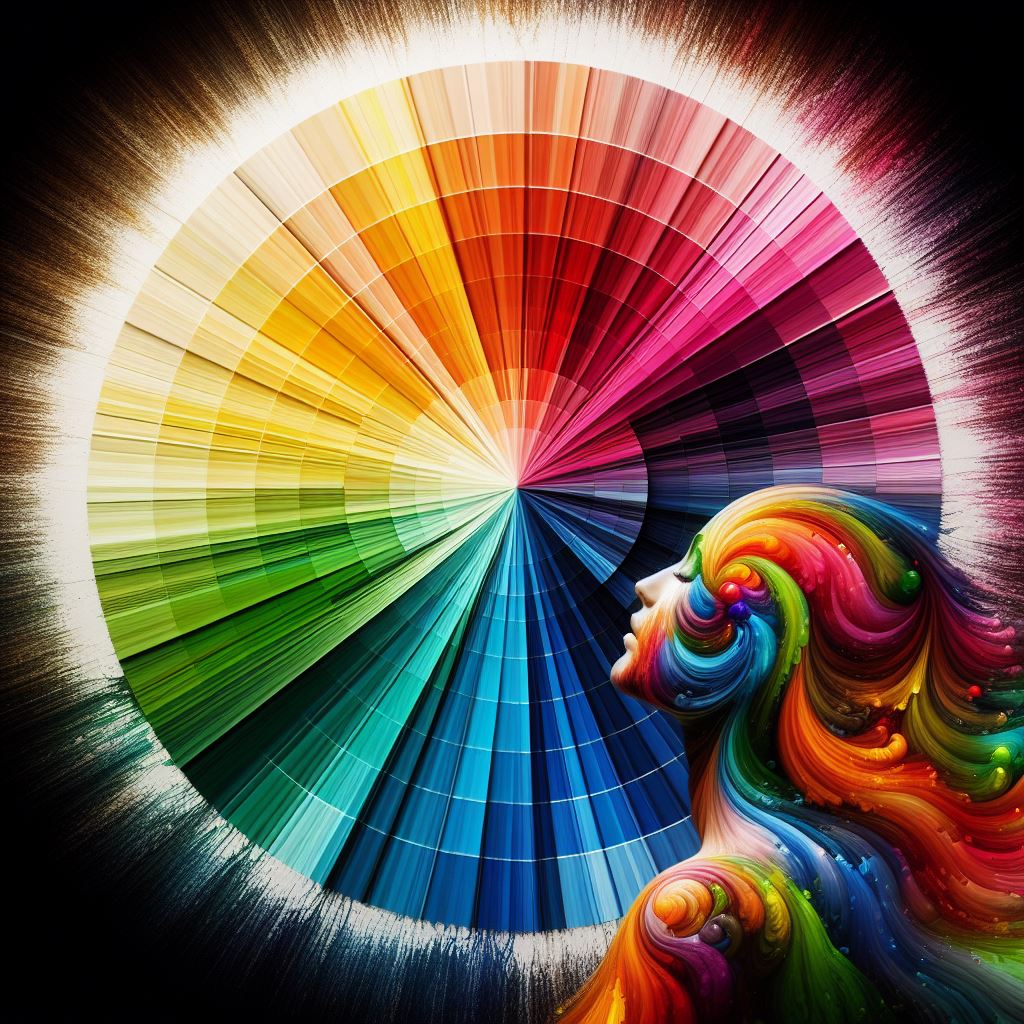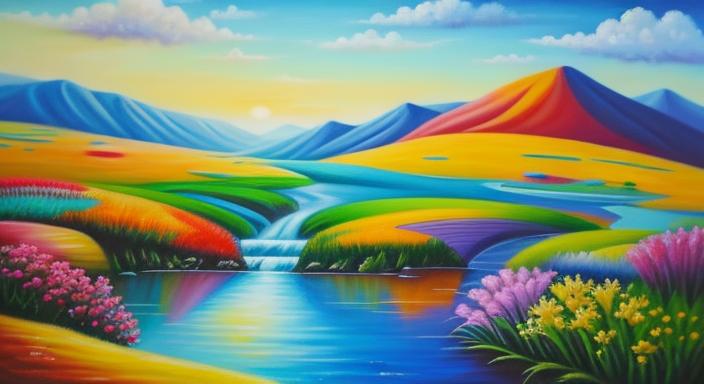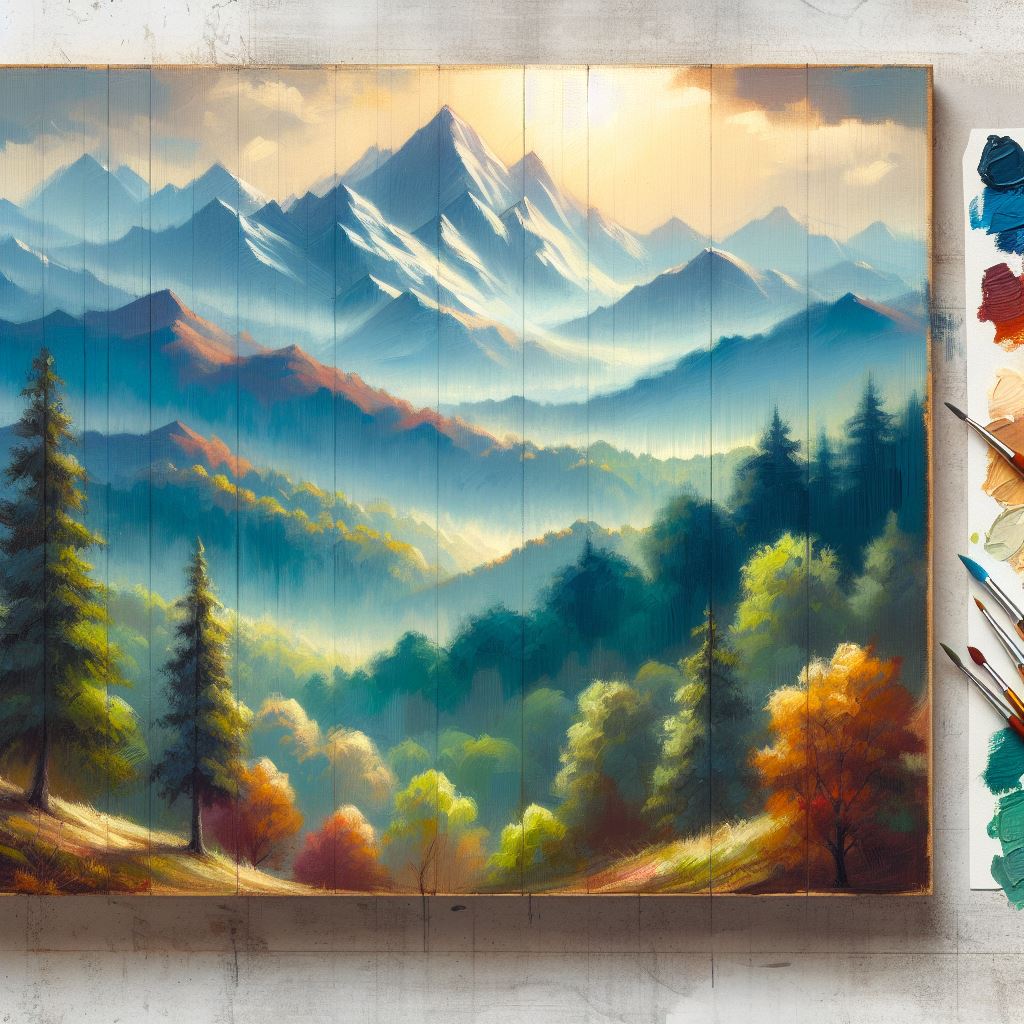The ability to mix oil paints with confidence is a fundamental skill that unlocks endless possibilities in your oil painting journey. Whether you’re a complete beginner or have some experience, understanding how colors interact will elevate your artwork and allow you to capture the world as you see it. In this guide, we’ll demystify color mixing, giving you the essential tools to create any hue you can imagine.

Understanding Color Theory
Before we start mixing oil paints, let’s explore the foundation of color theory: the color wheel. This simple tool is your map to understanding how colors relate to one another.

- The Color Wheel: At its most basic, the color wheel consists of three primary colors: red, yellow, and blue. These are the building blocks for all other colors. When you mix two primary colors, you get a secondary color:
- Red + Yellow = Orange
- Yellow + Blue = Green
- Blue + Red = Purple
- Complementary Colors: These are colors directly opposite each other on the color wheel, like blue and orange. They create vibrant contrasts when used together.
- Analogous Colors: These are groups of three colors that sit next to each other on the color wheel, such as yellow, yellow-orange, and orange. They offer a harmonious effect.
- Warm and Cool Colors: The color wheel can be divided into warm colors (reds, yellows, oranges) that evoke feelings of energy and sunlight, and cool colors (blues, greens, purples) that create a sense of calm and serenity.
Essential Oil Paint Mixing Techniques
Now it’s time to get hands-on with oil painting for beginners! Let’s start with a limited yet versatile primary color palette:
- Cadmium Red Medium: A true, vibrant red.
- Cadmium Yellow Light: A bright, opaque yellow.
- Ultramarine Blue: A deep, cool blue.
- Titanium White: For lightening and creating tints.
- Ivory Black: For darkening and creating shades.
1. Creating Secondary Colors
Try mixing your primary colors in equal proportions to achieve the pure secondary colors. A palette knife is ideal for this!
- Red + Yellow = Orange: Start with a small amount of each color and mix thoroughly.
- Yellow + Blue = Green: Remember, a little blue goes a long way! Adjust the proportions for different shades of green.
- Blue + Red = Purple: Experiment with adding more red for a warmer purple or more blue for a cooler one.
2. Lightening and Darkening Colors
- Adding White: White is used to create tints, which are lighter versions of a color (e.g., pink is a tint of red).
- Adding Black Black is used to create shades, which are darker versions of a color (e.g., navy is a shade of blue). Use black sparingly!
3. Creating Tints, Tones, and Shades
- Tint: A color + white.
- Tone: A color + white + black (this neutralizes or “grays” the color).
- Shade: A color + black.
Absolutely! Here are the next two sections of your SEO-optimized article, continuing with the same engaging style and careful keyword placement:
Advanced Color Mixing Tips
Once you’ve mastered the basics of color mixing basics in oil painting, it’s time to expand your techniques:
- Using Earth Tones: Earth tones, like yellow ochre, burnt sienna, and raw umber, provide warmth and create realistic, natural color mixtures. They’re especially useful for landscapes and portraits. Experiment with adding small amounts of earth tones to your primary mixes.
- Creating Color Charts: Color charts are an excellent way to practice oil paint mixing and develop an understanding of color relationships. Try creating simple charts where you mix your primary colors across the top and down the side, noting the resulting mixtures in each block.
- Color Combinations for Inspiration: Observe the natural world and the works of master painters to see how colors are used effectively. Consider these combinations:
- Landscapes: Blues, greens, and earth tones, often with a touch of warm color for contrast.
- Portraits: A range of skin tones created with earth tones, reds, and subtle additions of blues/greens for shadow.
- Still Life: Explore bold complementary pairings or subtle analogous color schemes.
Be Inspired: How Artists use Color
| Artist | Famous Painting | Use of Oil Colors |
|---|---|---|
| Leonardo da Vinci | Mona Lisa (c. 1503 – 1519) | Master of sfumato (subtle blending of tones/colors), creating soft, atmospheric effects. |
| Rembrandt van Rijn | The Night Watch (1642) | Used thick, textured oil paint (impasto) and dramatic contrast between light and dark (chiaroscuro). |
| Johannes Vermeer | Girl with a Pearl Earring (c. 1665) | Meticulous technique for smooth, luminous surfaces and exquisite detail. |
| Vincent van Gogh | Starry Night (1889) | Bold, expressive brushstrokes, vibrant colors, and thick application of paint to convey emotion. |
| Claude Monet | Impression, Sunrise (1872) | Short, loose brushwork to capture fleeting effects of light and color, essential to Impressionism. |
| Georgia O’Keeffe | Red Canna (1924) | Large-scale close-ups, smooth blending of colors, and vibrant hues for magnified natural forms. |
| Pierre-Auguste Renoir | Bal du moulin de la Galette (1876) | Dappled light effects, soft colors, and focus on figures to capture joyous atmosphere. |
| Frida Kahlo | The Two Fridas (1939) | Symbolism and vibrant colors used to express personal experiences and emotions. |
| Jackson Pollock | Number 1 (Lavender Mist) (1950) | Dripping and pouring technique to create abstract, dynamic compositions. |
| Mark Rothko | No. 61 (Rust and Blue) (1953) | Large blocks of translucent color layered to evoke emotional responses. |
Troubleshooting Common Color Mixing Issues
- Muddy Colors: This often happens when you overmix your paints or mix too many colors. Remember, sometimes a little goes a long way! To fix a muddy color, try adding a tiny bit of its complementary color to neutralize it.
- Colors that Dry Differently: Some oil paint pigments change slightly when they dry. A vibrant purple might look slightly duller, for example. Experimentation is key to understanding how your specific paints behave.
Additional Tips
- Clean Your Palette: Start with a clean surface each time you mix paint to maintain color purity.
- Work in Small Amounts: It’s easier to adjust a mixture and avoid wasting paint by starting with smaller quantities.
- Lighting Matters: Observe your color mixes under both natural and artificial light to catch any subtle shifts in appearance.
Conclusion
Remember, the best way to master oil paint color mixing is through practice and experimentation! Don’t be afraid to try new color combinations and observe how different hues play together. Understanding color theory, mastering basic mixing techniques, and experimenting with more advanced concepts will give you the confidence to create vibrant, expressive works of art with oil paints.

